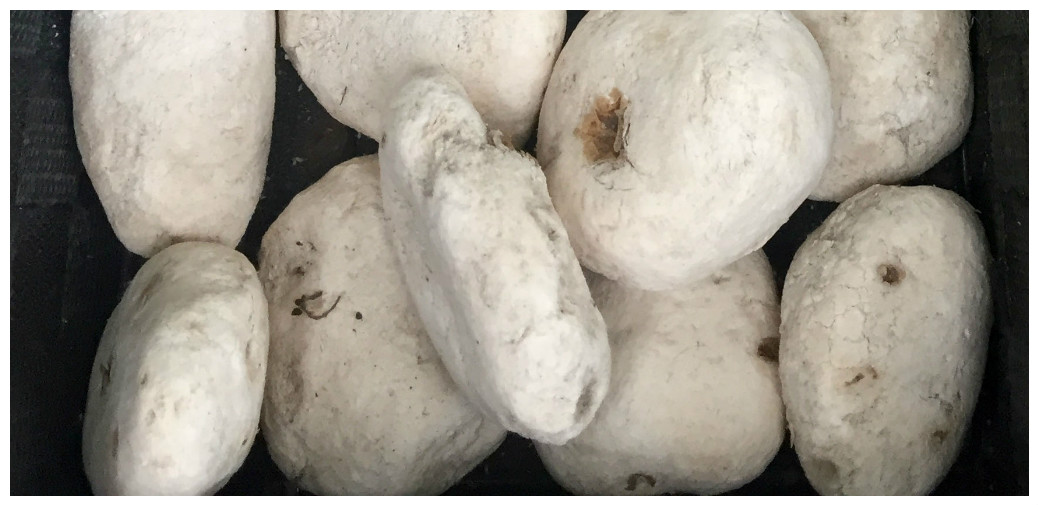The Peruvian potatoes in the photo above are preserved and can last for 10 years. The white color you see on the outside is a layer of fungus that protects the potatoes from mold/rot. To create this coating the potatoes are placed in a river for a month or so (in a bag of some sort with a rock on it, to keep them from getting swept away), and then sun dried. Interestingly enough, the mold from these fermented potatoes also serves as a natural source of penicillin.
A little more about the potato:
Potatoes originated in South America and were brought to Europe by explorers returning home from South American expeditions. There are about 3,800 types of potatoes native to Peru and according to the International Potato Center 4,000 in the Andean highlands of Peru, Boliva, and Ecuador. I never would have guessed that there an International Potato Center exists, but I see how important its research is in helping conserve potato diversity and to improve food security around the world.
Contrary to the carb-fearing beliefs of many, the low-calorie, high-fiber, powerhouse potato is a veritable superfood, particularly when baked rather than boiled or fried. Chock-full of nutrients like potassium, B6, phosphate, vitamin C, and kukoamine a blood-pressure lowering molecule, eating these sustained the indigenous populations of South America for thousands of years!
Next time you eat a potato, you can place yourself among the resourceful Andeans who first saw the value of the humble tuber, in all its 4,000-some-odd varieties.

Nice info on potatoes . Do they use the white potatoes to make flour or just eaten in soups?
I haven’t seen potato flours, but that doesn’t mean they don’t have any. They use potato in lots of dishes!
Facinating info on potatoes. What a fabulous way to set food aside!